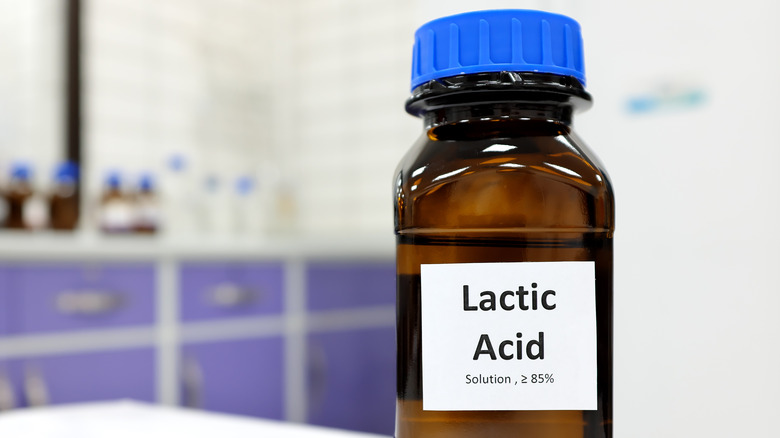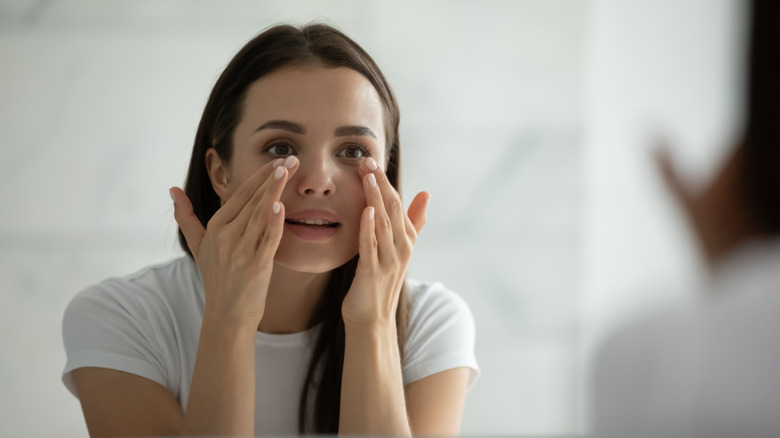What You Need To Know Before Using Lactic Acid For Skin Care
We may receive a commission on purchases made from links.
In the crowded world of skincare, it can be difficult to know what the standout products are. One that is growing in popularity, however, may be one of the best as it's gentle enough for most skin types, but powerful enough to produce results.
Lactic acid is an alpha hydroxy acid that is naturally found in sour milk and yogurt, according to Byrdie. In fact, in the days of Ancient Egypt, is was common for women to soak in milk baths for their skin-softening effect. Nowadays, lactic acid is produced synthetically, so you don't have wash your face with spoiled milk each night, but can chose from a wide range of products that offer formulations that exfoliate, treat blemishes, and target fine lines.
According to Sephora, lactic acid loosens bonds between dead skin cells, which allows them to slough off and reveal fresh, glowing skin. It may cause a bit of stinging or tingling, and some redness, which is normal.
If you use lactic acid in your skincare, be sure to add sun protection
Besides exfoliating, lactic acid has been used to smooth fine lines and even plump up skin (via Prevention). In one study, two formulations were tested, one with a 5% concentration of lactic acid and one with a 12% formula. Both products showed results, with the 12% option returning slightly more benefits. The greater concentration did come with an increased risk of side effects like redness, peeling, and itching, so it's important to keep your type of skin (especially if you're prone to sensitivity) in mind.
Lactic acid is considered a gentle treatment, much more so than glycolic or mandelic acid. Still, it is removing skin cells and exposing fresh, new skin, so sun protection is particularly important. According to VeryWellHealth, sun sensitivity can be present for weeks, even when you stop using lactic acid. So, use an SPF 30 or higher sunscreen to protect against creating new sun damage or getting sunburned.
Consider adding lactic acid into your skincare routine with a three-on/three-off schedule. Use it for three nights in a row, then take three nights off and use a hydrating treatment or moisturizer to enrich the skin layers that are being revealed (via Byrdie).

